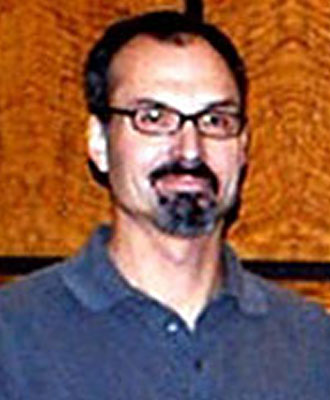To attend, please RSVP to epp@cseg.ca.
Unless we have exceeded the allowable number of people for the auditorium, we will not be replying to your email.
LunchBox Geophysics is free! Simply bring your own lunch (refreshments provided) and enjoy.
Abstract
The most common parameters measureable in seismology are VP and VS, being the propagation velocities of compressional P-waves and shear S-waves in elastic media. However, these measured quantities are composed of the more fundamental rock parameters of density and two moduli termed lambda (λ) and mu (μ), introduced and named after the 18th century French engineer, mathematician, and elastician Gabriel Lamé. Lamé also formulated the modern version of Hooke's law relating stress to strain in its general tensor form, thereby creating the basis for the science of materials, including rocks. Interestingly and most notably, only Lamé's moduli λ and μ appear in Hooke's law and not Young's modulus, the bulk modulus, or any other common modulus. The application of seismology to measure or describe rocks and fluids is based on the physics used to derive propagation velocity that originates with the elastic wave equations. These wave equations equate Hooke's law, providing the Lamé moduli, to Newton's second law that provides density and their solutions form the basis for AVO used to describe attributes of the propagating medium. The result gives relations between propagation velocity VP and VS and the intuitively simple Lamé moduli of incompressibility λ and rigidity μ. Consequently λ and μ afford the most fundamental and orthogonal parameterization of elastic seismic waves to extract information about rocks within the Earth.
The historical development of seismology at widely different scales has led to the use of a large and confusing array of parameters, which are usually complicated functions of the Lamé moduli. This includes Poisson's ratio, Young's and the bulk modulus as well as standard AVO attributes such as intercept and gradient, that arise as a result of the media's form and its measurement environment. For example the same rock will deform volumetrically as a function of the bulk modulus, or longitudinally as a function of Young's modulus, or as a function of the nameless P-wave propagation modulus (λ+2μ) in the Earth. Extracting the Lamé moduli from these mixed parameters provides insight into their physical meaning, because Lamé moduli are intrinsic and invariant properties of elastic media. Examples of this from the fields of earthquake seismology, AVO, and passive microseismology will be presented.
Biography
Bill Goodway obtained a B.Sc. in geology from University of London in 1977 and a M.Sc. in geophysics from University of Calgary in 2001. Prior to 1985, Bill worked for various seismic contractors in the United Kingdom and Canada. Since 1985, Bill has been employed at PanCanadian Petroleum within the Geophysics department in various capacities from geophysicist to being the team lead of a seismic analysis group. Following the PanCanadian and AEC merger to form EnCana in 2002, Bill has worked in the Frontier and New Ventures Group and more recently in Canadian Ventures and Gas Shales, as an adviser for Seismic Analysis. In this position, Bill is involved in virtually all aspects of applied seismic exploration from acquisition design and processing to experimental special projects and new interpretation methods.
He has presented and coauthored a number of papers at CSEG, EAGE, and SEG conventions and SEG research workshops on seismic acquisition and processing, borehole geophysics, anisotropy, multicomponent recording, and AVO.
Bill has received CSEG's annual Best Paper Award both in 1994 and 1997, the CSEG convention Best General Paper award in 1996 and the CSEG convention Best Technical Paper award in 1997. In 2008, Bill was the recipient of the CSEG Medal, the Society's highest award.
He is a member of CSEG, SEG, EAGE and APEGGA as well as the SEG Research Committee. In addition, Bill was elected vice president and president of the CSEG for the 2002/2003 term.





